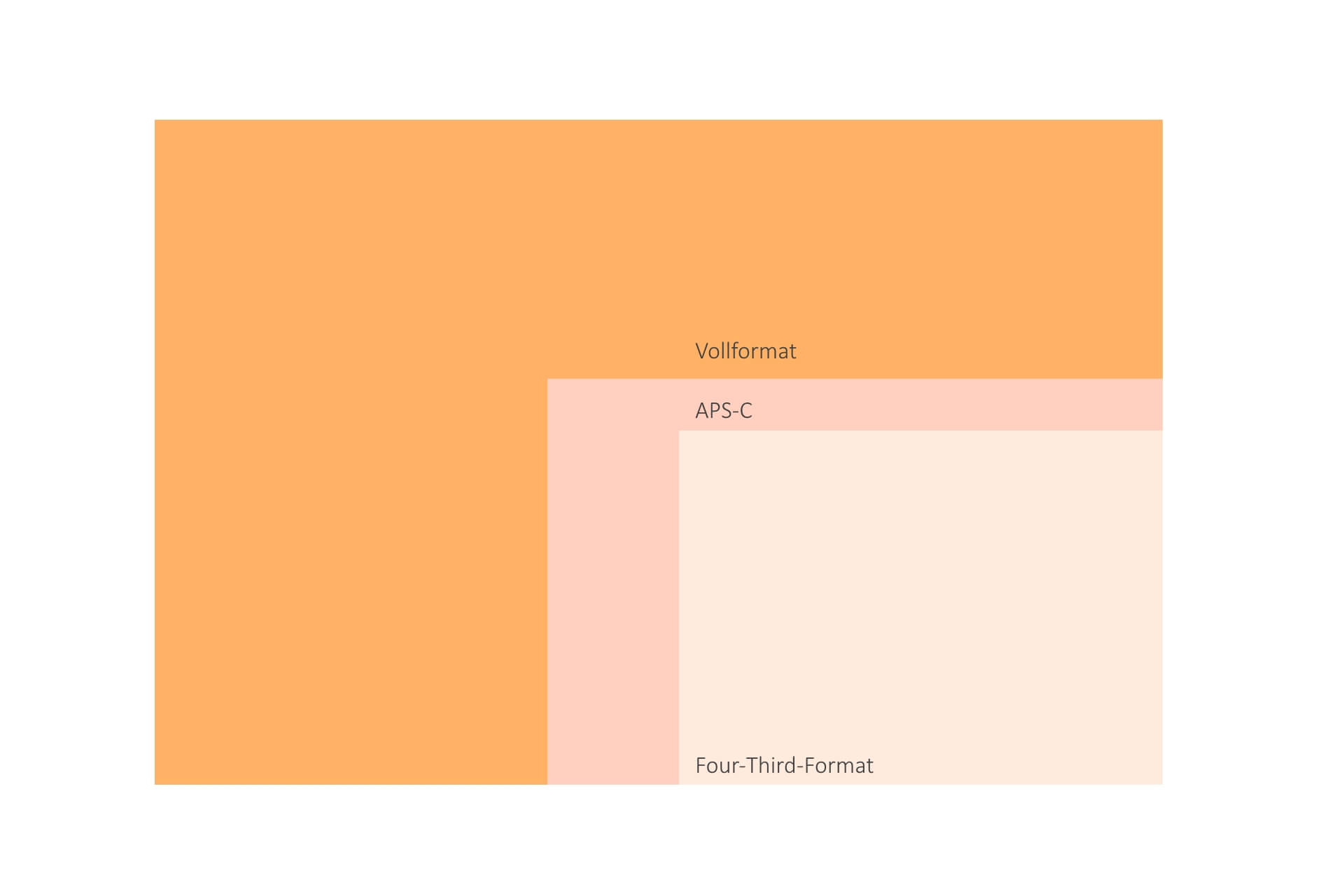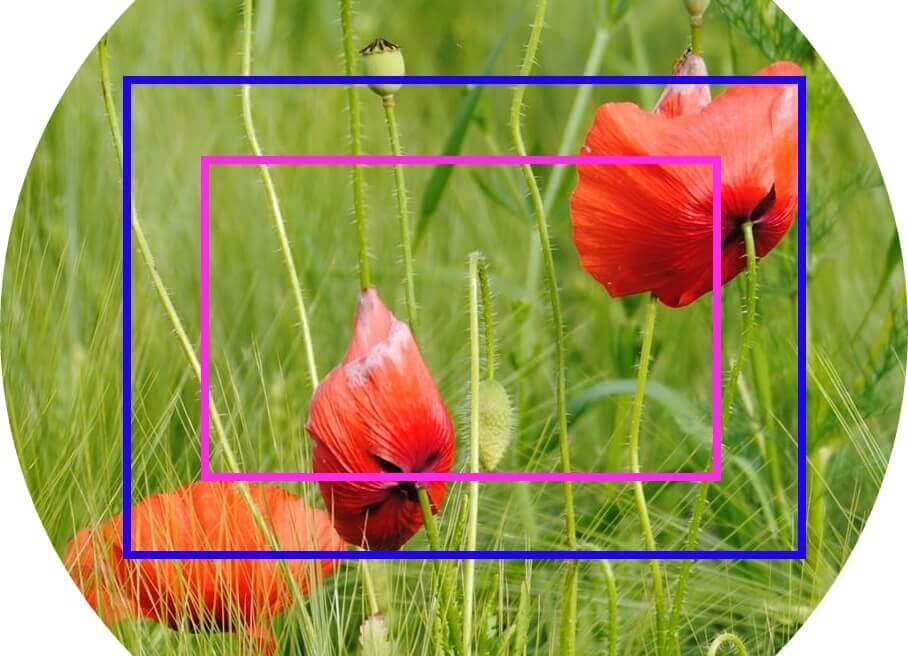
Crop Factor for DSLR Cameras
Modern DSLR cameras often have smaller sensors to save costs and space in comparison to analogue SLR 35mm models used in the past. Digital cameras with a crop factor have a smaller sensor, whereas a classic 35 mm sensor, also called full-frame sensor, has dimensions of 36 x 24 mm. The full format corresponds exactly to the masses of the negative images of 35 mm cameras. The diagonal length ratio of modern APS-C image sensors compared to a full-frame sensor is called the format factor or crop factor.

Effects of Sensor Size on the Image
The focal length of lenses is a fixed physical quantity that always remains the same and it depends exclusively on their construction. This means that the exact same area inside the camera is always illuminated. Due to their smaller surface compared to the 35 mm sensor the APS-C sensors commonly used today can only capture a smaller part of the subject. The edges of an image that extend beyond the image sensor will be not be depicted in the resulting image.
A digression into the basics of photography will give you a better understanding of how lenses produce an image in a circular shape. If the diameter of the image circle corresponds at least to the diagonal of the sensor, the entire motif can be photographed. However, if the chip in the camera used is smaller, then the edges of the motif will be cut off, thus, the angle of view will be reduced.

Finding the Right Lens
A lens with a focal length of 80 mm shows a different image section depending on the sensor type. While it corresponds to an 80 mm lens on a 35 mm camera a reduced section is photographed on the APS-C sensor. For example, on a crop factor of 1.6, an image section corresponding to a lens with 128 mm focal length will be displayed (80 mm x 1.6 = 128 mm).
So in order to be able to take a picture of the same subject with a DSLR camera with a crop factor as with a full-frame sensor, you will need to use a lens with a 50 mm focal length instead of an 80 mm lens (50 mm x 1.6 = 80 mm).
There are lots of lenses on the market that are adapted to the requirements of crop DSLR cameras. The image circle of these lenses has been reduced and adapted to the size of the image sensor. This often results in a smaller size and lighter weight at a lower price. However, there is one restriction as full-frame lenses can be used on APS-C cameras, but this is not possible the other way round. Since the image circle is smaller the image section that will be displayed is also smaller. As a result black areas will appear on the corners and edges of the image.
Advantages of Crop Factor Cameras
Lenses with shorter focal lengths can be used to achieve the same image as with a 35 mm sensor. Telephoto lenses weigh less and are also not as expensive. Friends of macro photography also benefit from a smaller sensor size, as the details of the image will be shown in a higher resolution.
Landscape photographers and anyone who to takes pictures with a wide-angle range prefer smaller sensors due to the wide range of possibilities that you can try out with the depth of field. This way, even the distant lenses in the background can be brought into focus without any problems. This is one of the reasons why crop cameras are the first choice for landscape photographers.
Disadvantages of Crop Factor Cameras
The advantage of shorter focal lengths can also become a disadvantage under certain circumstances. For example, while a full-frame sensor uses a wide-angle lens with a focal length of 30 mm, the APS-C sensor needs a focal length of about 20 mm to display the same image section. However, this is then no longer a wide-angle lens, as this falls into the category of a super wide-angle lens. Sometimes this effect can make it difficult to find the right lens for the desired application.
The depth of field becomes greater when you use a shorter focal length. Especially in portrait and model photography, full-frame sensors are therefore used to skilfully blur backgrounds. This is referred to as cropping with a shallow depth of field or the so-called bokeh effect.
Another advantage of classic full-frame technology over the smaller APS-C sensors is simply its larger sensor. You can use the zoom instead of cropping the image. In addition, more light can be captured due to the individual image pixels that are larger than in crop factor cameras. It is therefore not necessary to artificially increase the ISO value. The quality of the images increases and image noise can thus be avoided.
Summary - What Is Important to Remember?
Generally, it makes no difference whether one or two millimetres more or less focal length are used. An exact calculation of the focal length with the help of the crop factor is therefore not particularly helpful in most cases. Furthermore, the specifications given by the manufacturer's are not always entirely precise.
If you would like to take photos with a normal focal length of about 50 mm, which roughly corresponds to the range of vision of a human eye, you will have to use a lens on a crop DSLR that has been reduced by the value of the crop factor. Using a crop factor of 1.6 corresponds to a lens with a focal length of about 35 mm.
